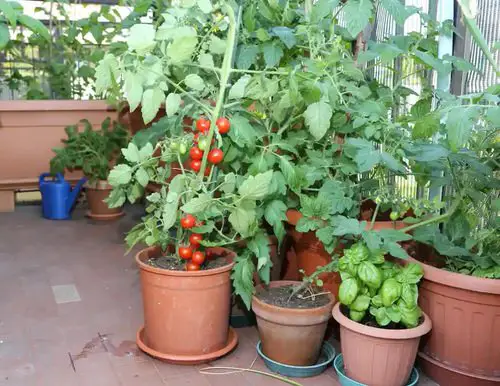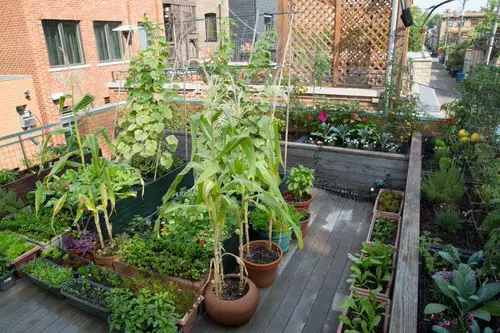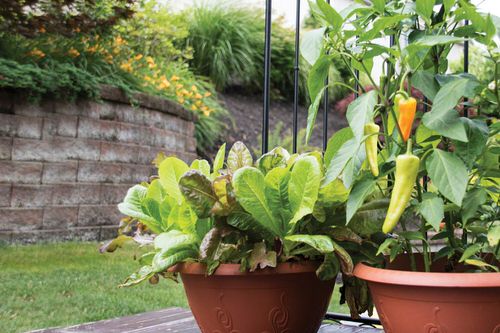Want to know how to make an Urban Vegetable Garden? This article will help you create a functional and productive one with ease!

Don’t let the limited space in the city stop you from growing your own vegetables. Here are some finest tips on starting an Urban Vegetable Garden that will help you achieve your dream of enjoying a homegrown harvest!
Find out some DIY indoor window garden ideas for urban gardeners here
What is An Urban Vegetable Garden?
Every inch of space counts while living in a city. Any area that you can utilize to grow vegetables and fruits in the city can be termed an Urban Vegetable Garden.
It can be a balcony, windowsill, rooftop, or patio where you can grow different vegetables, herbs, and fruits of your choice.
Urban Vegetable Garden Design

Do you have a small patio, a balcony, or a flat roof? If you have a veranda or a porch, you can use that space too. You can even grow a few plants on a windowsill.
Choose the solution of square foot gardening for a city vegetable garden. Mel Bartholomew proposes square foot gardening. It allows to utilize the small space well and increases productivity.
- In a square foot garden, vegetables are grown in raised beds made of individual squares of one square foot each (30 cm) and at least 6″ deep. You can make such raised beds of wood and PVC pipes. If you don’t mind having a permanent structure, make one out of concrete.
- In contrast to the traditional garden, which requires a large field to grow vegetable patches and a lot of care, a small square foot garden is suitable for limited spaces.
This way of growing vegetables greatly helps. Regular plant care actions are effortless to maintain. With a simple watering can, you can easily manage crops and water each plant in the right amount. No waste, no weed, and almost no problem with pests.
The icing on the cake is that those appetizing and colorful veggies look pretty decorative in an urban vegetable garden.
And do not forget that a small urban vegetable garden can be as beautiful as it is functional, especially if you grow flowers in it with vegetables.
Urban Vegetable Garden on a Balcony

Balconies may have limited space, but if you have one that receives enough sun, then you can easily manage to grow a lot of vegetables and herbs. Use the same square foot gardening method or grow plants in containers.
If you want to make a vegetable garden on the balcony, read this post
Rooftop Vegetable Garden

A rooftop offers a lot more space as compared to small balconies, and if you optimize it well, you’ll be able to cultivate enough vegetables for home use.
The more sun it gets, the better it will be like most of the vegetables, spices, herbs, and fruits require at least 4-6 hours of bright and direct sunlight per day to grow well.
Learn how to make a rooftop vegetable garden here
Patio Vegetable Garden

Having a patio is a boon if you live in a city. Use it productively by making a square foot garden. You can grow vegetables, herbs, and fruits in small containers or railing planters, depending on your space.
Check out some stunning patio garden ideas here
Urban Vegetable Garden on Veranda, Porch, or other Enclosed Spaces
If you have a porch or veranda, use it to grow vegetables and herbs in containers. Choose plants that are easy to grow in partial shade as most of the time, these spaces don’t receive full sun.
You can try all the green leafy vegetables like spinach, bok choi, lettuce, and other root vegetables like carrot, parsnip, and potatoes. Homegrown fresh and organic potatoes taste heavenly.
Some Quick Tips
- Don’t cram up the containers with a lot of plants. Be aware that some vegetables need to be grown alone as they need more space for root development like peppers and chilies. The same is the case with tomatoes, eggplant, and cucumbers. Zucchini also prefers to grow alone in a large container.
- It is best to choose a variety of vegetables that do not send runners and spread as they will fill up the space of containers.
- By combining vertical supports in squares or containers, you can also grow beans, peas, and small gourds.
- Carrots, radishes, lettuce, and beets are also easy to grow.
- Fertilize plants regularly with organic fertilizer.



So many great ideas! Growing in raised beds and containers is also one of the best ways overall to get started gardening. Thanks for the great tips plus the beautiful pictures to inspire!